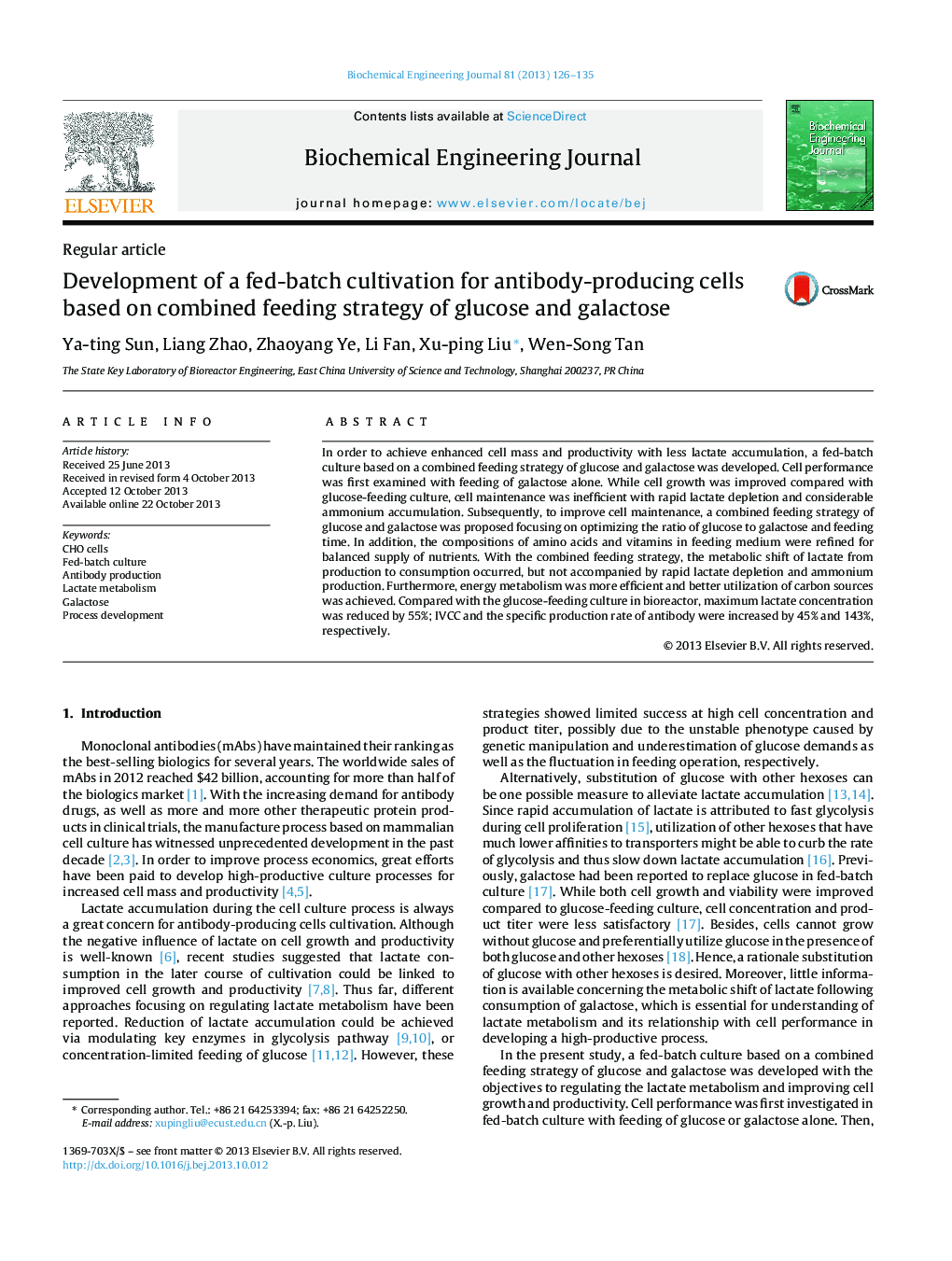| Article ID | Journal | Published Year | Pages | File Type |
|---|---|---|---|---|
| 3226 | Biochemical Engineering Journal | 2013 | 10 Pages |
•Cell mass and productivity were increased compared with glucose-feeding fed-batch.•Great reduction of lactate accumulation and consumption of lactate were realized.•Energy metabolism and utilization of carbon sources were more efficient.•Supply of amino acids and vitamins was optimized for feeding of glucose and galactose.
In order to achieve enhanced cell mass and productivity with less lactate accumulation, a fed-batch culture based on a combined feeding strategy of glucose and galactose was developed. Cell performance was first examined with feeding of galactose alone. While cell growth was improved compared with glucose-feeding culture, cell maintenance was inefficient with rapid lactate depletion and considerable ammonium accumulation. Subsequently, to improve cell maintenance, a combined feeding strategy of glucose and galactose was proposed focusing on optimizing the ratio of glucose to galactose and feeding time. In addition, the compositions of amino acids and vitamins in feeding medium were refined for balanced supply of nutrients. With the combined feeding strategy, the metabolic shift of lactate from production to consumption occurred, but not accompanied by rapid lactate depletion and ammonium production. Furthermore, energy metabolism was more efficient and better utilization of carbon sources was achieved. Compared with the glucose-feeding culture in bioreactor, maximum lactate concentration was reduced by 55%; IVCC and the specific production rate of antibody were increased by 45% and 143%, respectively.
